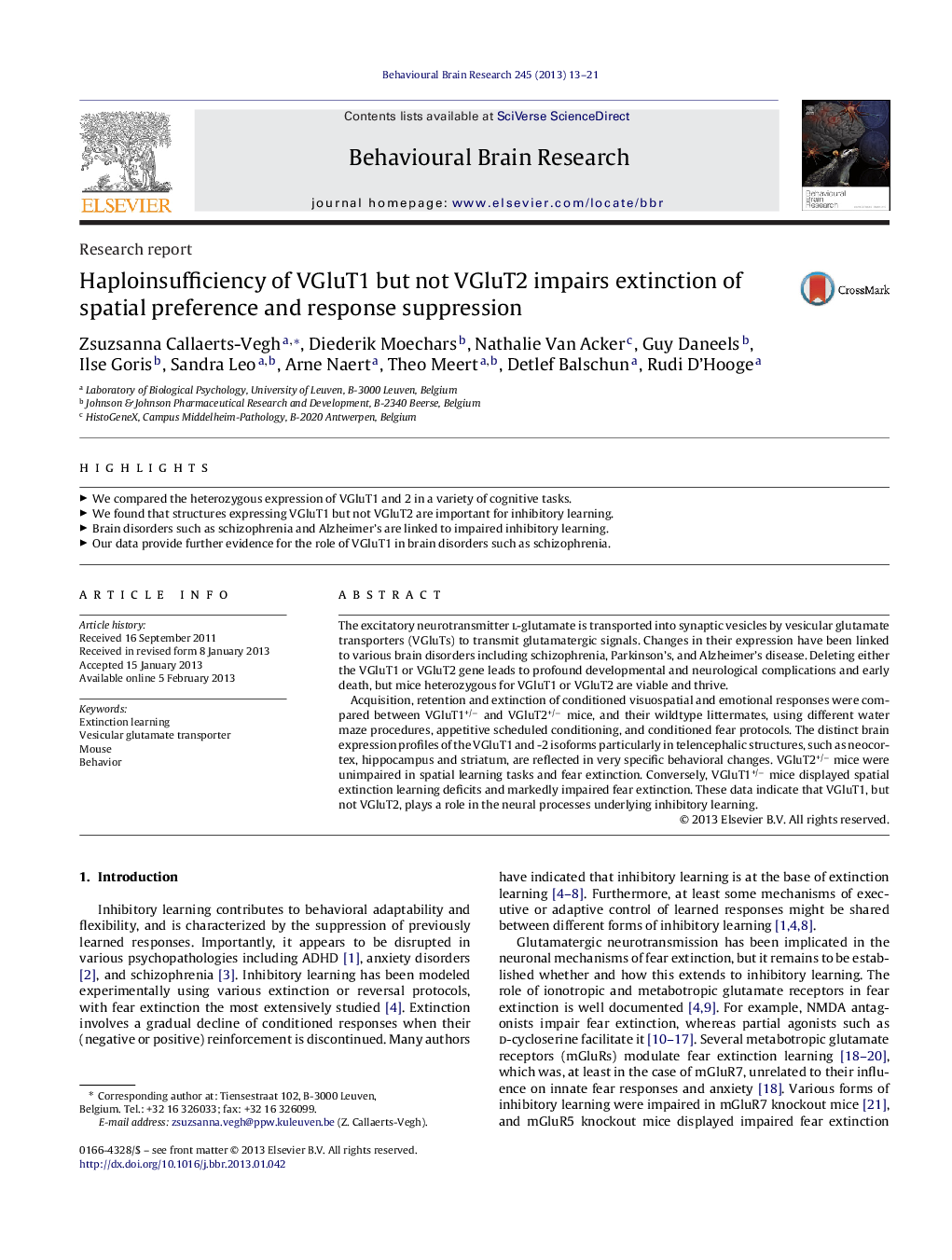| Article ID | Journal | Published Year | Pages | File Type |
|---|---|---|---|---|
| 4312825 | Behavioural Brain Research | 2013 | 9 Pages |
The excitatory neurotransmitter l-glutamate is transported into synaptic vesicles by vesicular glutamate transporters (VGluTs) to transmit glutamatergic signals. Changes in their expression have been linked to various brain disorders including schizophrenia, Parkinson's, and Alzheimer's disease. Deleting either the VGluT1 or VGluT2 gene leads to profound developmental and neurological complications and early death, but mice heterozygous for VGluT1 or VGluT2 are viable and thrive.Acquisition, retention and extinction of conditioned visuospatial and emotional responses were compared between VGluT1+/− and VGluT2+/− mice, and their wildtype littermates, using different water maze procedures, appetitive scheduled conditioning, and conditioned fear protocols. The distinct brain expression profiles of the VGluT1 and -2 isoforms particularly in telencephalic structures, such as neocortex, hippocampus and striatum, are reflected in very specific behavioral changes. VGluT2+/− mice were unimpaired in spatial learning tasks and fear extinction. Conversely, VGluT1+/− mice displayed spatial extinction learning deficits and markedly impaired fear extinction. These data indicate that VGluT1, but not VGluT2, plays a role in the neural processes underlying inhibitory learning.
► We compared the heterozygous expression of VGluT1 and 2 in a variety of cognitive tasks. ► We found that structures expressing VGluT1 but not VGluT2 are important for inhibitory learning. ► Brain disorders such as schizophrenia and Alzheimer's are linked to impaired inhibitory learning. ► Our data provide further evidence for the role of VGluT1 in brain disorders such as schizophrenia.
